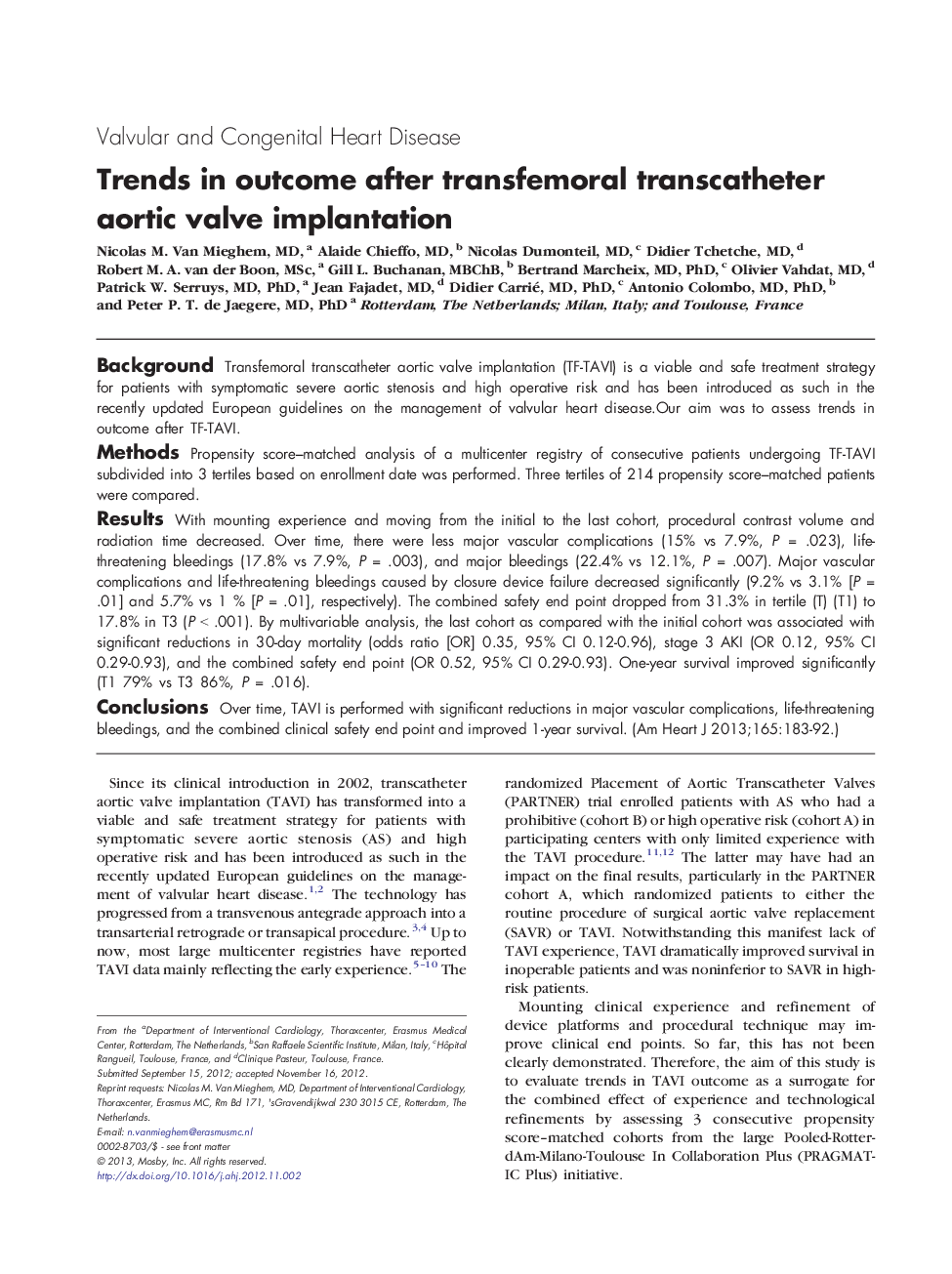| Article ID | Journal | Published Year | Pages | File Type |
|---|---|---|---|---|
| 2850105 | American Heart Journal | 2013 | 10 Pages |
BackgroundTransfemoral transcatheter aortic valve implantation (TF-TAVI) is a viable and safe treatment strategy for patients with symptomatic severe aortic stenosis and high operative risk and has been introduced as such in the recently updated European guidelines on the management of valvular heart disease.Our aim was to assess trends in outcome after TF-TAVI.MethodsPropensity score–matched analysis of a multicenter registry of consecutive patients undergoing TF-TAVI subdivided into 3 tertiles based on enrollment date was performed. Three tertiles of 214 propensity score–matched patients were compared.ResultsWith mounting experience and moving from the initial to the last cohort, procedural contrast volume and radiation time decreased. Over time, there were less major vascular complications (15% vs 7.9%, P = .023), life-threatening bleedings (17.8% vs 7.9%, P = .003), and major bleedings (22.4% vs 12.1%, P = .007). Major vascular complications and life-threatening bleedings caused by closure device failure decreased significantly (9.2% vs 3.1% [P = .01] and 5.7% vs 1 % [P = .01], respectively). The combined safety end point dropped from 31.3% in tertile (T) (T1) to 17.8% in T3 (P < .001). By multivariable analysis, the last cohort as compared with the initial cohort was associated with significant reductions in 30-day mortality (odds ratio [OR] 0.35, 95% CI 0.12-0.96), stage 3 AKI (OR 0.12, 95% CI 0.29-0.93), and the combined safety end point (OR 0.52, 95% CI 0.29-0.93). One-year survival improved significantly (T1 79% vs T3 86%, P = .016).ConclusionsOver time, TAVI is performed with significant reductions in major vascular complications, life-threatening bleedings, and the combined clinical safety end point and improved 1-year survival.
